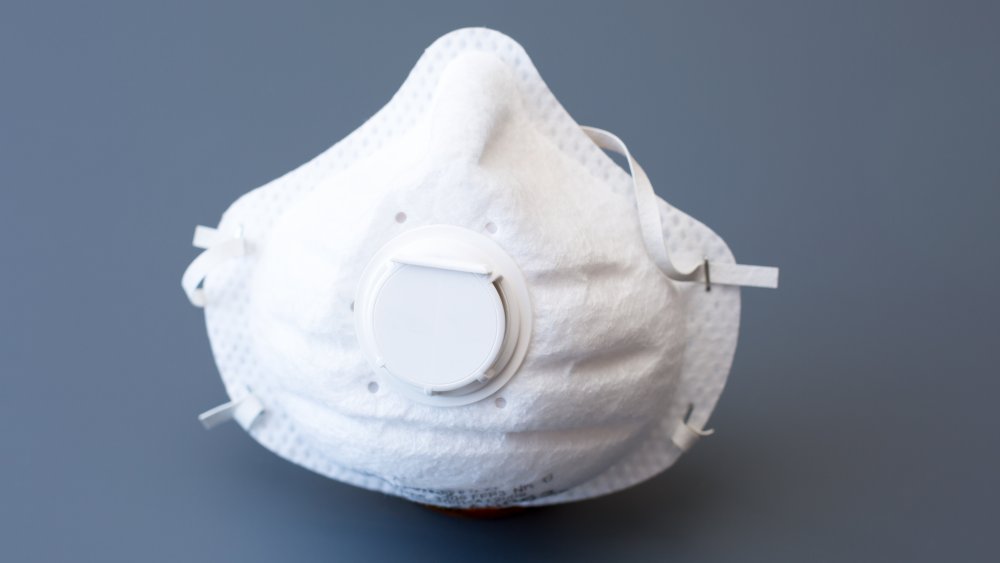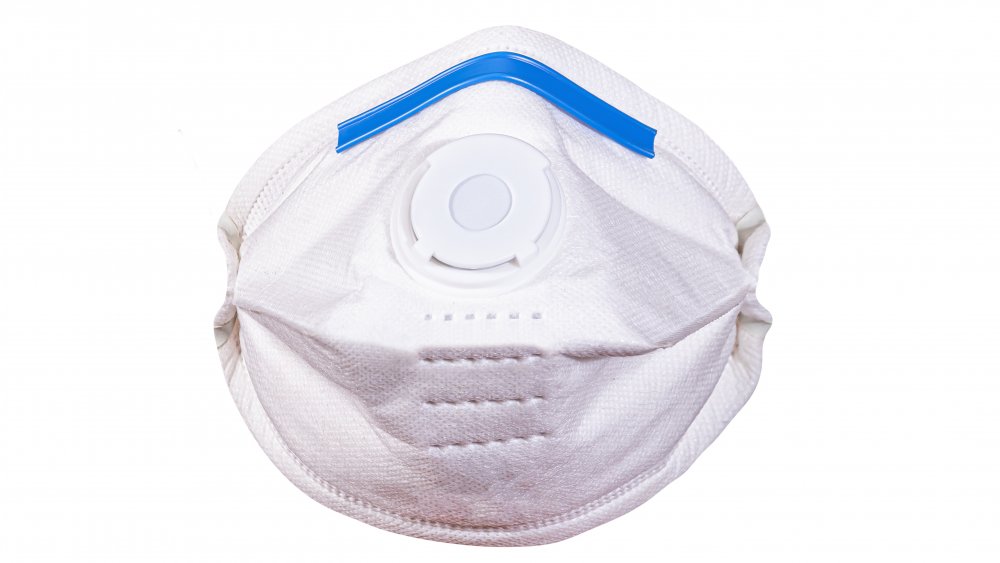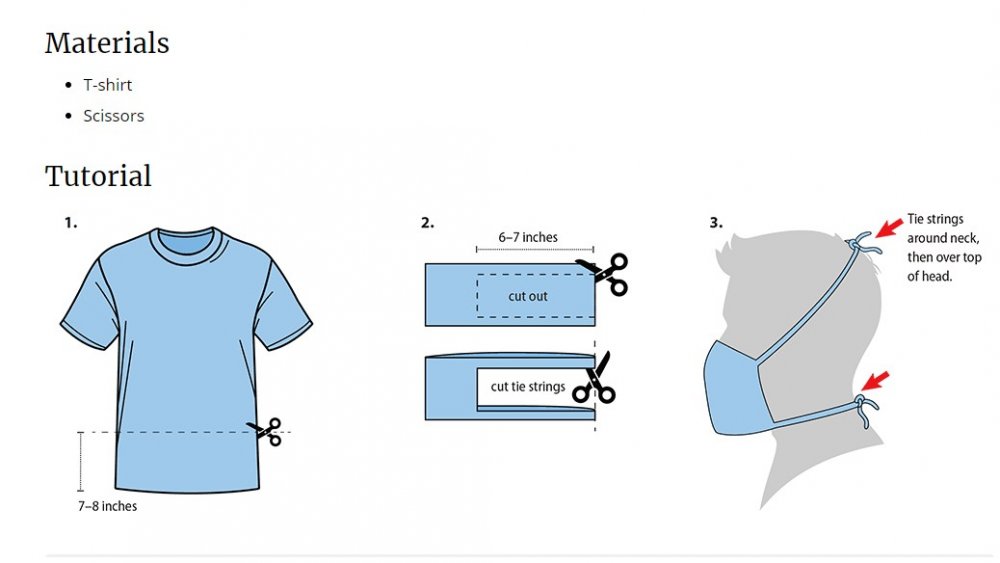The CDC Is Saying To Never Wear This Kind Of Mask, Here's Why
Everyone would greatly appreciate it if you would stop wearing masks with little valves on them, thank you very much.
That's the message that the CDC is trying to get out amidst the ongoing 2020 coronavirus outbreak. Currently, essential workers and grocery shoppers around the world are subscribing to social distancing and PPE guidelines laid out by the WHO, utilizing a variety of face masks to stem the tide of the infection. Unfortunately, despite the way they make you look like a high-ranking halflife warboy, valved masks aren't doing much to protect your fellow man.
The misunderstanding may come from the media coverage afforded to the N95 mask which, in some iterations, includes an exhalation valve, which looks both impressive and official. Unfortunately, while these valves are generally helpful in filtering particles from incoming air, they do very little to keep aerosolized droplets inside. With current estimates reported by NPR pointing to 25% of COVID-19 carriers being asymptomatic, healthcare professionals are concerned that this could lead to more infections.
Skip the valves
According to occupational safety publication EHS Today, valved breathing masks were never intended for use in maintaining a sterile field. Rather, they were created as a means of protecting factory and construction workers from inhaling particles, to be used as a one-way barrier that keeps bad stuff out but doesn't do anything to hold things in. So while using a valved mask might help to keep you from exposing yourself to pathogens, it won't do much to protect those around you if you're already infected. Or, as the CDC explains it in a very helpful section of their website dedicated to outlining PPE standards, "Some users feel that a respirator with an exhalation valve keeps the face cooler and reduces moisture build up inside the facepiece. However, respirators with exhalation valves should not be used in situations where a sterile field must be maintained (e.g., during an invasive procedure in an operating or procedure room) because the exhalation valve allows unfiltered exhaled air to escape into the sterile field."
Make your own bubble of isolation!
The good news is that there are plenty of ways to cover that sweet gob of yours, even if most of them won't give you the same sultry Sith apprentice vibe that a mask with a valve provides. A lot of them are easy DIY projects, and the government would actually seem to prefer that you run with those options instead of raiding Amazon for high-end respirators. Freeing up the limited PPE equipment on hand for the needs of medical professionals seems like the least we can do.
The CDC has a couple of folksy, home-grown recipes for face masks available on its website. Their rules of thumb: your mask should "fit snugly but comfortably against the side of the face, be secured with ties or ear loops, include multiple layers of fabric, allow for breathing without restriction," and "be able to be laundered and machine dried without damage or change to shape." That leaves plenty of wiggle room, and their current recommendations include options made out of scrap fabric, t-shirts, and bandanas.


